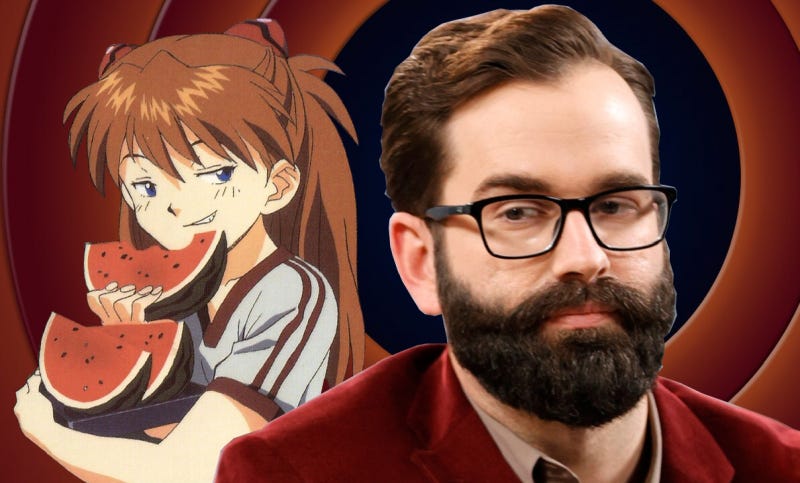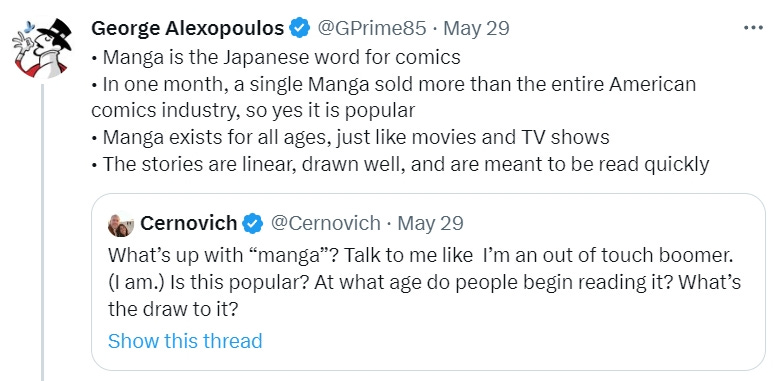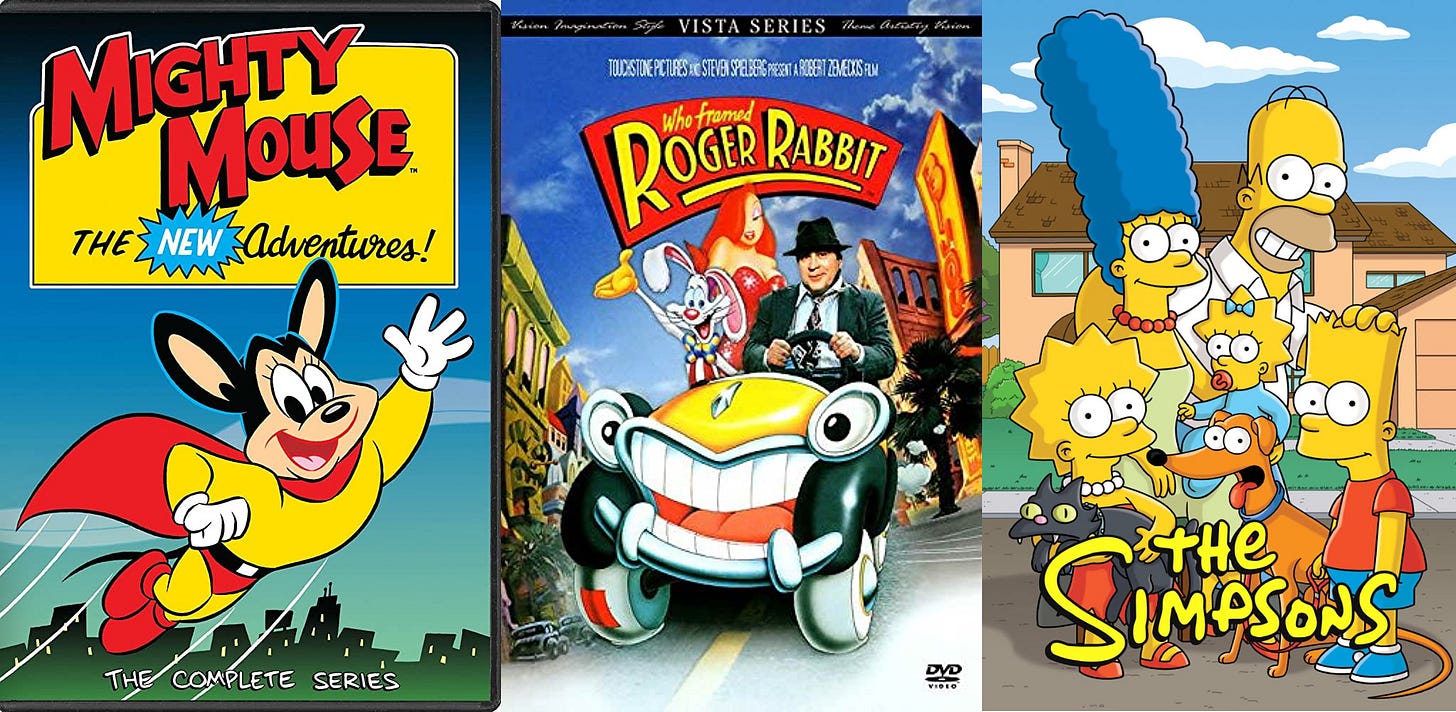Animation VS Culture War Dogmatism
How great art transcends the limited perspectives of both Matt Walsh and his woke adversaries.

During Pride month, we’re seeing some boycott-wary corporations refrain from painting their logos in rainbow colored Passover Lamb’s blood, and Elon Musk tweeting out conservative pundit Matt Walsh’s “What is a Woman” documentary is further evidence of a changing tune in popular culture.
But how much can the tune really change when so many people’s dopamine fix comes from fighting the good fight against their existential enemy, and what remains when you take this culture war dialectic away?
Without Matt Walsh, the social justice brigade has no oppressor, but they’d have no trouble filling that spot with anyone to the right of however much further left they go.
But were radical leftists to disappear, what remains of Matt Walsh as a personality worth listening to?
While there’s probably room for nuance outside the Matt Walsh persona, his public approach to cultural issues tends to be quite dogmatic, reminding me of the intersectional victimhood categorization that social justice advocates are prone to.
One particular example of this was his grouping of anime as “satanic” and that adults should not watch anime or cartoons in general.
For starters, despite admitting his statement being more of a troll move, Walsh’s wording itself is nonsensical even for a troll as it sounds like he prefers the satanic anime being for kids instead of adults despite denouncing it right before.
But it doesn’t really matter whether Walsh thinks anime is demonic or not. In the ancient Greek sense of “daemon” being one’s guiding spirit, a case can be made for these spirits inspiring and influencing many Japanese artists in their creative pursuits.
What is a far greater smear is dismissing anime and cartoons in general as being for kids only.

In an earlier piece, I proposed judging school books not only by the levels of sex and violence, but by artistic merit and intellectual depth. In this case, much of contemporary children’s literature is the equivalent to addictive empty calorie “kid’s meals” that clueless adults accept as the norm.
In the same way, Matt Walsh’s own children’s book “Johnny the Walrus”, is very basic in its lesson, much like the woke books that this one stands against such as Ibrahim X. Kendi’s “Antiracist Baby”.
Forgetting the difference in messaging, both books lack the kind of depth and sense of humor that’s found in many classic fairy tales, anime and manga, as well as high quality Western comics and animation, such as the golden age Warner Brothers cartoons many of us grew up watching.
This later example is especially interesting as the Looney Tunes and Merrie Melodies shorts featuring Bugs Bunny, Daffy Duck, etc. played before feature films in movie theaters and were made to appeal to the adults as well.
The U.S. cartoon Golden Age of the 1940s to 60s eventually gave way to decline. Television allowed for generations of low quality “children’s entertainment” to eventually creep in by the 70s, headed up by executives who didn’t prioritize appealing design and staffed by TV writers who saw cartoons as an embarrassing stepping stone on their way to adult programming (or should I say “programming adults”?)
But by the late 80s, more risqué and creative animated shows like Mighty Mouse: The New Adventures and The Simpsons started changing the game.
The former unleashed what was described as a creator-driven animation revolution while the latter made animation a respectable medium for adult entertainment with brilliant shows like South Park following in its way.
Who Framed Roger Rabbit (1988) ushered in the “Disney Renaissance” despite not being a Disney Film (albeit some cameos), and its executive producer Steven Spielberg had enough clout at the time to not just push this groundbreaking animation / live action hybrid through, but paved even more of the way to freer cartoon expression with Tiny Toon Adventures (1990-92)
From there on out, the U.S. animation industry experienced highs and lows, but the more recent wave of new blood has unfortunately embraced more of a candy-colored identarian social justice nature:
This may be stylistically different from the 1970s and 80s Saturday Morning cartoons forbidden to show violence and immoral unchaste behavior, but they're the opposite end of the same moralistic horseshoe that opposes anything edgy, imaginative, and anti authoritarian.
Inside many of the great creators of the American animation revival was a spark that stood up against conformist ideology regardless of its origin. No wonder why animation legend Ralph Bakshi was at the tip of the spear with Mighty Mouse, as his previous works like “Fritz The Cat”(1972) and “Wizards” (1977) helped change the squeaky clean perception of animation that Americans had a the time.
But the depth of these more adult works is reflected in the kind of children’s entertainment Bakshi wanted to create.
This depth is creativity and it is the enemy of both Matt Walsh and Ibram X. Kendi, who prefer having a clearly defined and dogmatic categorization for how one must act.

When it comes to Japan, however, the historical climate has more consistently fostered creativity in its anime and manga industry, ensuring that both younger and older audiences are treated with utmost respect in terms of art and storytelling.
This does not mean there are no specific genres within these Japanese mediums.
To the contrary, there’s the largest manga genre called shōnen targeting adolescent boys, shōjo targeting adolescent girls, seinen for men, and josei for women. But the sheer amount of diversity within these genres and the range of readership beyond the target audience for truly great works speaks to how effectively they connect with the Jungian “collective unconscious.”

While certain anime and manga related interests go into fetishistic obsession for those less interested in real life socialization, there’s been more of an acceptance in Japanese media of men having sex drives rather than keeping it puritanically hidden till marriage like Matt Walsh, or categorizing it as “toxic masculinity” like the woke neo-Puritans.
As I wrote about in an earlier piece on the anime inspired Milady NFTs, the longing for one’s anima (or the inner feminine) speaks to a sense of completion that many young men who have rejected woke culture seek out as the archetype of a desired companion. No wonder they have these anime girls as avatars.
But alongside this accepted desire, is the drive to overcome hardships in cases which are rarely the categorized one dimensional good vs evil scenario. Many times, the “bad guys” become new friends that you face larger challenges alongside.
Such a holistic approach is very different from a holy war that the left and right are fighting, where one side has to accept their whole dogma and reject everything the opposition says.
This does not mean throwing caution to the wind and inviting a crazy tweaker into your house so he could be your new “unlikely ally”, but developing a more introspective and nuanced view of reality so you are not on the receiving end of ideologies that cannot be questioned.

If what reigns over our culture is an algorithmically driven “own da libz with facts and logic” dopamine drip rather than speaking to something deeper, we might as well get into the pods and eat the bugs like Klaus Schwab wants us to, as there is nothing more to aspire towards other than obeying the algorithm.
This need for depth, however, does not imply that championing against wokeness and reaching into the collective unconscious cannot be done at the same time, nor does it mean being forced to make art that’s clean of any political undertones.
The focus should instead be to create something more substantial than what can just as easily be written in a series of tweets.
The “clown world” of ridiculous people exercising censorious power over us can be addressed in a far more powerful way if we’re willing to dive into deeper waters than the preachy pundits on the left and right care to, lest they get eaten by the sharks of their subconscious.
It’s just about time we started making this great art as there is much chaos to tap into down there. We’re gonna need a bigger boat.




But Lev.
You, who host Yarvin so often, should know better to not bring a culture war knife to a nuclear struggle for power. A side has to win, and one will lose, and the cycle of action-reaction will repeat forever.
Plus, you already talk about this from the perspective of the modern, cosmopolitan writer who is tolerant to lots of stuff "meh, who cares", a fashionably bit nihilistic and distant, and "safe". Not all of us have this luxury, my job is directly threatened by the progressive lunacy around gender, for example, so even with the remote and mostly "meh who cares" danger of social right wing conformity ahead, I'd rather drink champagne while my enemies crumble and suffer, if you know what I mean?
Now, anime and Walsh. I'm definitely not religious. But I do think that today's young males are lonely and vulnerable... to the dangers of anime to trans pipeline. These incel types are unable to score women, so they become attracted to these Asuka lolicon-adjacent drawings. And some eventually embrace themselves as women. That is not something we should tolerate, sorry.